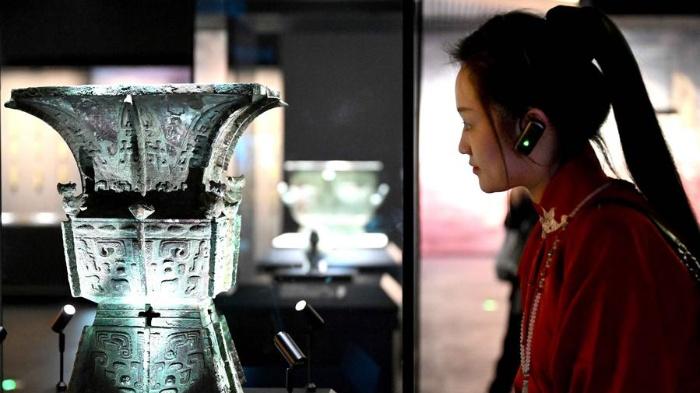BEIJING, Feb. 29 (Xinhua) -- The exchange and mutual learning of civilizations are the driving force for the progress of human civilization, said archeologist Wang Wei at the Chinese Academy of History earlier this week.
Wang, also director of the Academic Division of History under the Chinese Academy of Social Sciences, made the remarks at a lecture when answering a question from Antara News Agency.
The lecture, themed on the historical process of the origins, formation, and early development of Chinese civilization, was attended by 33 international journalists from 25 foreign media outlets including the New York Times, Bloomberg News, and Reuters.
Wang introduced the project to trace the origins of Chinese civilization, which proved that China's history includes a million years of humanity, 10,000 years of culture, and more than 5,000 years of civilization.
"While trying to summarize the characteristics of Chinese civilization during the exploration of its origins, we realized that without a comprehensive understanding of other world civilizations, it is challenging to identify our distinctive features," said Wang.
Wang said that over the past decade, China has intensified its efforts, conducting archaeological research in various countries in Central Asia and Africa.
According to the National Cultural Heritage Administration, Chinese experts have undertaken cultural relics preservation and restoration projects in 11 sites across six countries over the past decade, including the ancient city of Khiva in Uzbekistan and Angkor Wat in Cambodia.
Furthermore, joint archaeological endeavors have been conducted with 24 countries, resulting in the repatriation of over 1,800 lost cultural relics to their home country.
"We hope that through our endeavors, other countries can benefit from our technology and financial support," said Wang, "it is important to strengthen mutual learning and dialogue between civilizations, and archaeology plays a unique role in this regard."
Organized by China's State Council Information Office, the group also toured an exhibition on Chinese civilization at the Chinese Archaeological Museum ahead of the lecture.
"I find this event very interesting because it can help me learn more about Chinese history and culture," said Shunsuke Sakakibara from Jiji Press, Japan.
As a national-level professional museum established by the Chinese Academy of History, it boasts an exhibition space spanning over 7,000 square meters and showcases over 6,000 exhibits.
Liu Guoxiang, deputy director of the Chinese Academy of History, guided the tour and introduced a pair of jade earrings that can be traced back to the Neolithic age.
"This pair of jade earrings was unearthed when I was 24 years old during an archaeological excavation in north China's Inner Mongolia Autonomous Region," said Liu. "Without metal tools, our ancestors used cord and sand to cut the jade. The utilization of the softest material to cut through the hardest showcases the wisdom of conquering the unyielding with the yielding."
Apart from jade artifacts, the group also observed cultural relics with distinctive loong elements, such as a painted pottery plate with a loong design and a loong-shaped artifact made up of over 2,000 pieces of turquoise.
"I like loong, or dragon, and there was a cultural relic featuring a yellow dragon, and when we looked up, we saw the digital technology of a flying dragon, and I think it's a great combination of nowadays technology and ancient artifacts," said Olena Protchenko from China Arab TV.




 A single purchase
A single purchase









